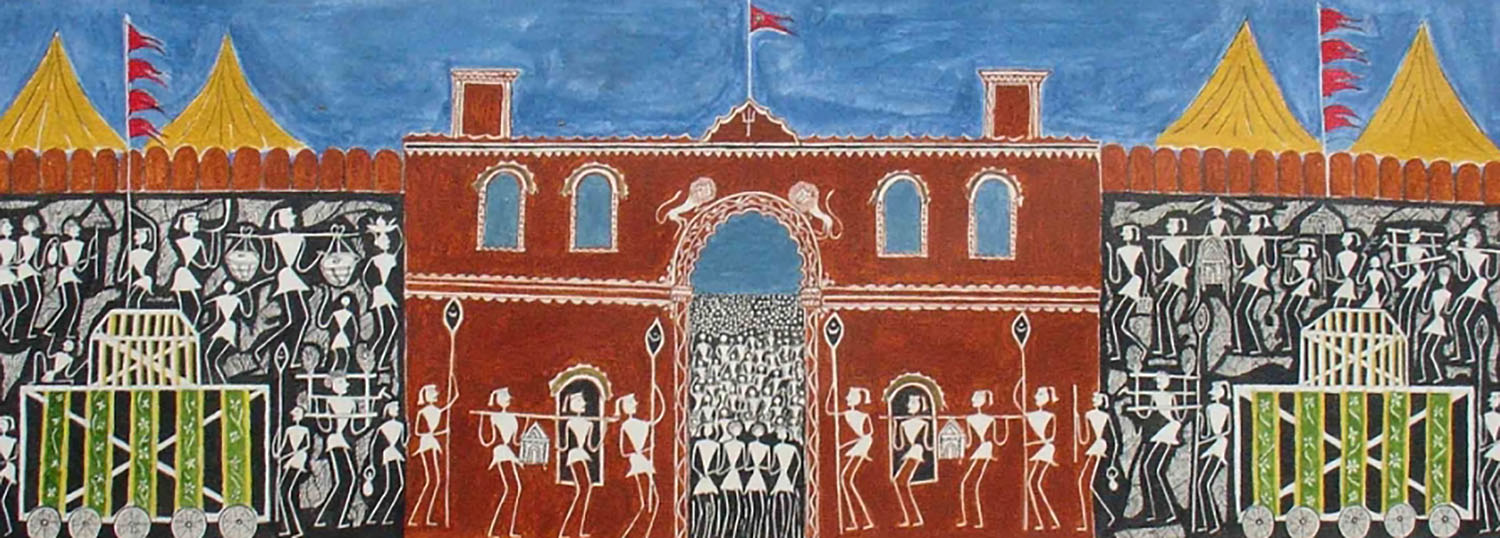ARTICLE
Muria Ghotul Painting
A form of mural art practiced by the Muria community residing in the Bastar region of present-day Chhattisgarh, Muria ghotul painting was historically used to adorn the walls of the ghotul – an important religious, social and cultural institution of the community. Over time, the number of ghotul has gradually dwindled and Muria artists have adapted to painting on surfaces such as paper and canvas.
Traditionally, the ghotul was a mixed dormitory where adolescent unmarried boys and girls of the village were admitted, given a rank and assigned a corresponding set of duties. Apart from the duties of their own household, individuals living in the ghotul also had duties towards the community, especially during social events and rituals such as fairs, weddings and funerals. The boys and girls also developed relations among themselves and, depending on the ghotul system being followed in the village, cohabited for a long period in the dormitory or changed partners. While at the dormitory, they also learned the arts, crafts, songs and dances of the community. The ghotul usually comprised one structure but, in some villages, it was also common to build a lodging area for visitors and travelling officials next to the ghotul.
In his book The Muria and Their Ghotul (1947), anthropologist and social historian Verrier Elwin studied the life of the Muria people and the importance of the ghotul in detail. He also documented the paintings that adorned the walls of the ghotul buildings, depicting elements of nature and human life. A photograph of a ghotul taken by Sunil Janah in the 1950s indicates that simple geometric patterns made of dots and lines were also a part of ghotul decoration. Some walls of the ghotul also featured clay reliefs and models painted with locally-sourced pigments.
After the decline of the ghotul tradition, Muria ghotul artists found support via institutions such as Bharat Bhawan, Bhopal. In the 1980s, the works of three Muria artists – Belgur Muria, Shankar Muria and Pishadu Muria – were recognised for their techniques and themes, and displayed at the Roopankar Art Museum in Bharat Bhawan.
Over the last decade, Muria artists such as Meheru Muria have emerged, depicting aspects of Muria community life such as hunting, dancing, festivals and celebrations in their work. Meheru Muria has also created a series of murals at the National Handlooms and Handicrafts Museum, New Delhi.
Bibliography
Our website is currently undergoing maintenance and re-design, due to which we have had to take down some of our bibliographies. While these will be re-published shortly, you can request references for specific articles by writing to hellomapacademy@map-india.org.








